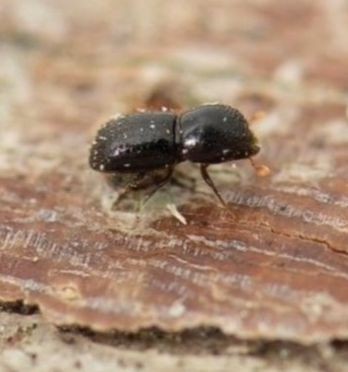Polyphagous shot-hole borer
The polyphagous shot-hole borer (Euwallacea fornicates) is a tiny beetle that tunnels into living trees, targeting horticultural, native, and amenity varieties.
Background
The borer (PSHB) is both an agricultural and environmental pest with more than 400 host species. It is native to Southeast Asia and now found in several areas of Western Australia – see the WA quarantine area for PSHB.
PSHB can be spread at any stage of its lifecycle with the movement of infested trees and raw timber materials. This includes whole plant parts, timber for construction, timber packaging, wood chips, or any material from host trees.
Per the Plant Quarantine Standard (PQS), South Australia has importing restrictions to prevent PSHB from entering via:
- plant material
- non-structural wood timbers – round or sawn logs with or without bark, firewood, and wood chips.
Impacts
PSHB tunnels into the tree’s stems and branches, causing galleries which severely damage the hosts. Some species die within 2 years of infestation.
The pest breeds in maple, oak, plane, coral, avocado, and willow trees, which are known as reproductive host trees – see a global host list for PSHB. PSHB also attack eucalyptus, citrus, and olive trees, but they don’t bore into or breed in these species.
The insect has a symbiotic relationship with the Fusarium fungus, cultivating it as a food source and to feed its larvae. This disrupts water and nutrient movement within the vascular system of affected trees, causing the disease Fusarium dieback.
If the borer spreads beyond urban amenity trees, it could impact the nursery, fruit and nut tree, and forestry industries.
Identification
The adult female beetle is winged, up to 2 mm long, and ranging from brown to black in colour. Males are smaller and wingless. The larvae are 3.5 mm long and 1.1 mm wide, curved and legless, with a white body and a reddish head.
PSHB can be hard to spot as much of their lives are spent inside a tree, but they are most visible in spring and autumn.
Signs of PSHB presence in trees often start in the upper canopy, including:
- multiple 2 mm entry holes on the tree
- crystalline foam (appearing as sugar volcanoes) exuding from the entry holes
- dark brown to black staining of the wood around entry holes
- frass (a powdery substance) extruding from the tree – this is caused by tunnelling, indicating a high level of infestation
- thick resin or sap on the tree’s branches or trunk, which can push the beetle out of the gallery
- wilting and dying branches and leaves, leading to eventual tree death.


